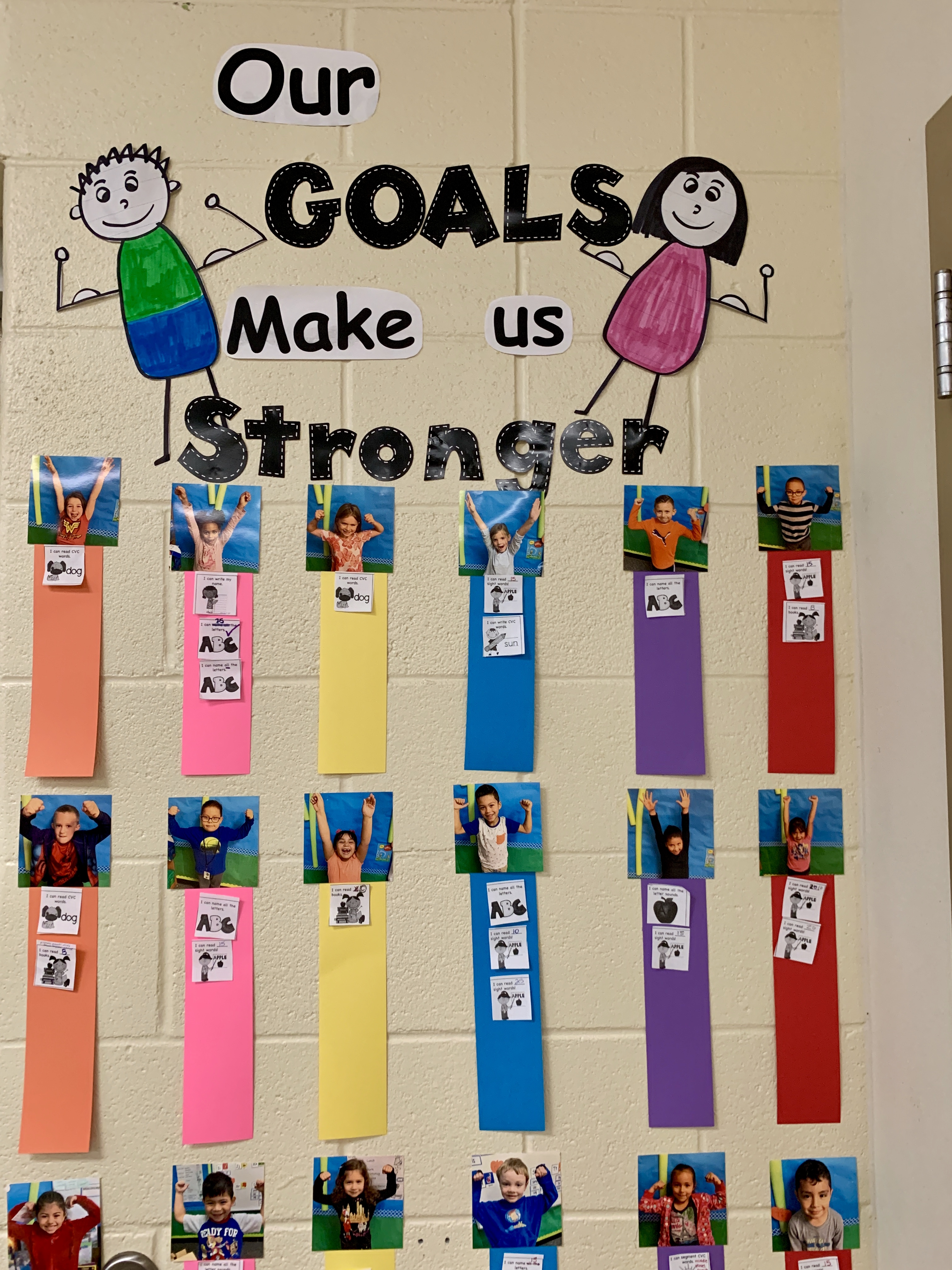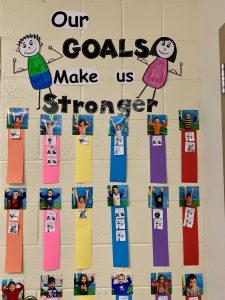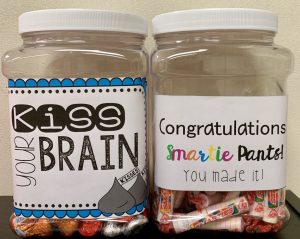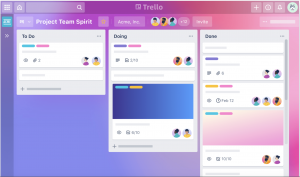Goal setting | How Can I Get Stronger? | K-2

Student Objective
Instructions
Step 1: Make a connection to setting and making a goal
Have the students think about the word: goal. What do you think about when you hear the word goal?
Here is an example of an extension/personal connection:
“Well, I used to think about sports when I heard the word, goal. When you make a goal in sports, your team gets a point and you are closer to winning the game! But, to score a goal it isn’t easy. You have to practice your skills to get stronger, you have to work with your coach and your teammates to create a plan and you have to move around some obstacles (the other team) to make the goal. However, after do you do all of that hard work and make the goal, how do you feel? Show me with your faces.”
Step 2: Learn about making and setting goals
Now, you will connect this to setting learning goals. Learning goals help you become stronger students and get closer to reaching even bigger goals (going to the next grade, graduating school, etc.).
Have students think about possible goals they could get for themselves? What do you want to become stronger in?
- Do a Think, Pair, Share to get students talking about ideas.
If students need more support, you can choose a book that could generate ideas for goal setting (creating goals for the characters). Here is a list of books as ideas from Stories by Storie.
Step 3: Help set goals
Meet with the students individually or in small groups to help them set some achievable academic/learning goals, with some strategies to meet these goals.
Here are some links to some resources for displaying goals: K-1 or K-2:Multiple Goals or K-2: Quick Slips.
These goals can be displayed in the classroom or kept safely at their desks or in their journals. Whichever location works best for your students.
Here is an example of how a Kindergarten teacher displayed her students’ goals. She used similar resources to the K-1 link provided above. Each student had their own card with specific goals taped to them. These goals ranged from academic to behavioral. As a child reached their goal, they got to move their goal to the piece of paper underneath their picture (of them celebrating or showing their muscles). This helped them keep track of and physically see their progress. Once they moved their goal over, they worked with the teacher to determine a new goal and place that on the goal card.
 From Erika Murray in Monroe. NC
From Erika Murray in Monroe. NC
Step 4: Share goals and celebrate achievement
Have the students share their goals (if they feel comfortable).
 As students are working toward their goals, have periodic check-ins. When students make their goals you can establish a culture of celebrating their achievement. An example is having all of the students cheer quickly, and then get back to work. Or you could have Hershey Kisses and Smarties, where they could “Kiss their Brain” or “Be a Smartie Pants” to make their achievement.
As students are working toward their goals, have periodic check-ins. When students make their goals you can establish a culture of celebrating their achievement. An example is having all of the students cheer quickly, and then get back to work. Or you could have Hershey Kisses and Smarties, where they could “Kiss their Brain” or “Be a Smartie Pants” to make their achievement.
Here are some digital tools you and your students could use to keep track of their goals and tutorials on how to use them:
Student: Goal Setting and Tracking Sheets
Link to Video Tutorial: Here
Teacher: Keeping Track of All Student Goals
Link to Video Tutorial: Here
Or you can use Trello which provides a template for creating “to-do lists” that they could use to record their goals.
Justification
This instructional idea helps students define and identify personal and academic/learning goals. They work together with their teacher to determine and achieve their goals.

